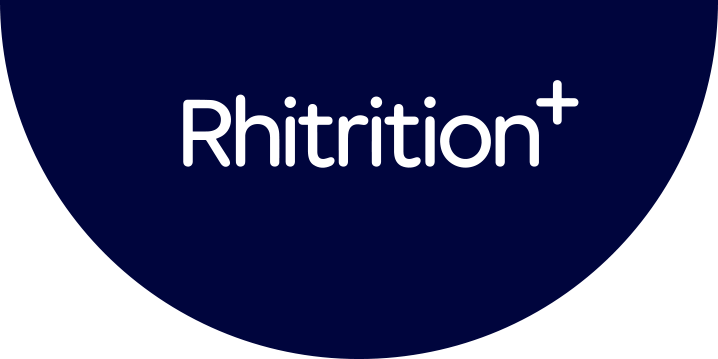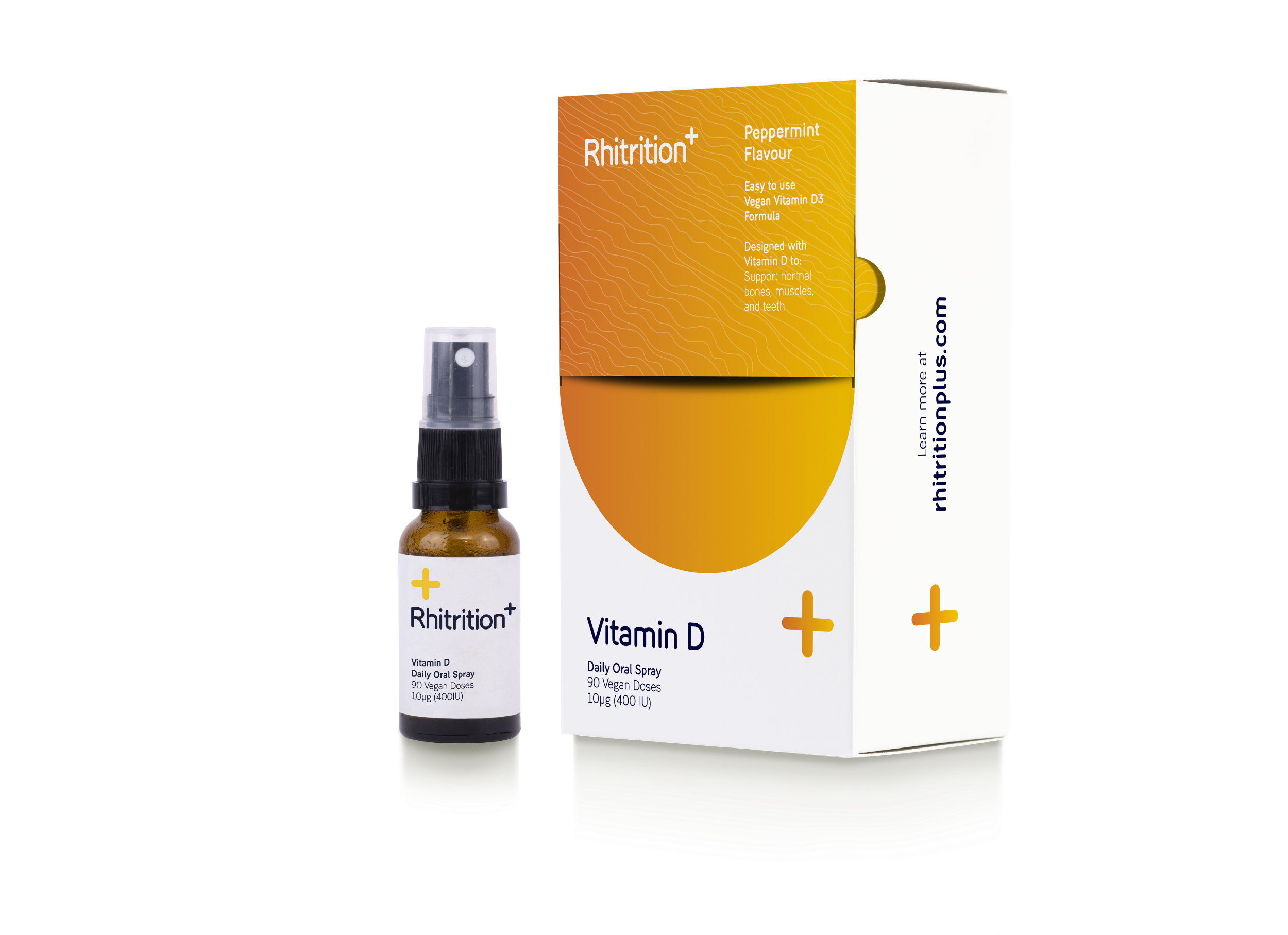Vitamin D2 vs D3, Is There A Difference?
Article by Rhiannon Lambert, BSc MSc RNutr
“Vitamin D describes a group of fat-soluble nutrients which are all very similar in structure. The two main forms are vitamin D2 (ergocalciferol), and vitamin D3 (cholecalciferol). But what is the difference?”
What is vitamin D?
Vitamin D is often referred to as the sunshine vitamin, as we get the majority of our vitamin D from exposure to the sun’s rays. It can also be found in some foods but in fairly low amounts, so even if you eat a varied and balanced diet you are unlikely to get enough vitamin D within your diet.
We need vitamin D in our body for a variety of functions with the most important one being to help regulate the amount of phosphorous and calcium within the body. This regulation is needed to help keep our teeth, bones, and muscles healthy.
We also need to vitamin D to help support a healthy immune system as well. As a result of the coronavirus pandemic, there was also research to suggest that there may be a link between vitamin D and COVID-19.
However, there is not yet enough evidence to say with certainty that vitamin D should be taken to help prevent getting the infection and be protective against the disease.
Vitamin D3 and Vitamin D2: where do they come from?
The two main forms of vitamin D, as mentioned above, are vitamin D2 and vitamin D3. Vitamin D2 is mainly found in plant sources, such as mushrooms, as well as fortified food, such as fat spreads and breakfast cereals.
The majority of vitamin D3 that we consume in our diets comes from animal sources such as oily fish, liver and egg yolks. However, whilst most vitamin D3 sources do come from animal-based products, there are some exceptions where you can also find vitamin D3 in plants.
For example, it can be found in algae which means that even if you follow a vegan or primarily plant-based diet you can still increase your vitamin D intake.
This is especially important as most vitamin D supplements, that contain vitamin D3, use fish oils which are not suitable for vegans or plant-based eaters.
So the fact that algae is a good source of vitamin D3 means there is a better variety of vitamin D supplements for those who follow this diet.
Vitamin D3 Is Formed in Your Skin
Vitamin D3 is the form that is produced under our skin when it is exposed to the sun’s rays. There is a similar process that occurs in plants and mushrooms when they are exposed to sunlight, but D2 is produced instead.
Sources of vitamin D
Although most of the vitamin D we get is through the sun, there are also some foods we can eat which can improve our vitamin D status.
Foods that are high in vitamin D3
Oily fish including salmon, sardines, mackerel, trout, pilchard and kippers
Red meat
Liver
Egg yolks
Fortified foods such as breakfast cereals, fat spreads and infant formulas
Foods that are high in vitamin D2
Mushrooms, that have been grown in natural sunlight (UV light)
Fortified foods
Dietary supplements
It’s always a good idea to check the front and back of food and supplement packaging labels to help you understand exactly which type of vitamin D is in a product, especially when it comes to fortified foods such as breakfast cereals or plant-based milks. Fortified foods, simply refers to food items, usually common and widely-used everyday food and drink items, that have had additional vitamins and minerals added to them to enhance their nutritional value.
These foods include breakfast cereals, plant-based milks, and flour. They are a great way to get increase our essential vitamin and mineral intake which, without these food items we may otherwise be lacking in our diets.
The Best Sources of Vitamin D for vegans
Whilst most sources of vitamin D are animal based, there are a small number of foods that are suitable if you are a vegan.
For example, some types of mushrooms are naturally grown in the sun’s UV light and are there a great plant-based source of vitamin D.
There are also lots of fortified foods that also provide vegans with a source of vitamin D, including plant-based milks, orange juice, breakfast cereals, and algae.
When Is The Best Time To Take Vitamin D?
During the winter months (October-March), the sun’s rays are not typically strong enough to allow us to make vitamin D. In the UK it is therefore advised that everyone should take a daily 10ug vitamin D supplement during these winter months, alongside a healthy, balanced, and varied diet as we cannot get an adequate amount of Vitamin D from the sun. Getting the right amount of vitamin D, as we know, is important to support the optimal health of your bones, teeth, and muscles.
How Much Sun Do You Really Need for Vitamin D?
For some people there may be circumstances where they might be at an increased risk of vitamin D deficiency. For example,
Those with darker skin, such as those of African, African-Caribbean or south Asian origin, who live in the UK or other northern climates, may not produce enough vitamin D during summer months
If you are spending a lot of time indoors as you may be housebound or frail,
In institutionalised care
Or you wear clothing that covers up most of your skin when outdoors
Then you are potentially at a higher risk of a vitamin D deficiency.
In these cases, it is recommended that you should consider supplementing with vitamin D all year round.
Vitamin D2 to D3 conversion
To be able to be used by the body, the vitamin D that we get from the sun and from our diets needs to undergo a certain conversion process. This is as follows:
Sun exposure – UVB rays from the sun penetrate the skin and react with 7-dehydrocholesterol enzyme in the skin cells
Forming vitamin D3 – enzymes convert into pre-vitamin D, which is then restructured into vitamin D3
Or Dietary sources – eating foods containing vitamin D2 or D3
Activation – another enzyme turns vitamin D3 into calcitriol (the active form of vitamin D that can be used by the body)
Vitamin D2 vs. D3: Which Is better?
Vitamin D2 is cheaper to produce, hence why this is the form used in fortified foods. However, there is a key difference between vitamin D2 and D3.
Both forms can be absorbed into the bloodstream but they are metabolised by the liver differently.
The liver converts both D2 and D3 into calcifediol (also known as calcidiol) which is the main form of circulating vitamin D found in the blood, but most research, including a systematic review and meta-analysis, shows that vitamin D3 yields more calcidiol compared to the same quantity of D2.
In other words, it would appear that vitamin D3 is more effective at raising circulating vitamin D levels within the blood compared to vitamin D2. Both forms may be used in dietary supplements but based on these findings, those that contain vitamin D3 are arguably superior.
Rhitrition+ Vitamin D oral spray
At Rhitrition+ we will always advocate a ‘food first’ approach when it comes to nutrition and health. However we know that sometimes this isn’t always possible, particularly for vitamin D intake and living in the UK.
As an evidence-based company, we let the science do the talking which is why we use an algae-based vitamin D3 in our vegan oral spray. This will ensure you receive the required and recommended daily amounts in one simply spray, with optimal absorption for healthy bones, teeth and muscles.





